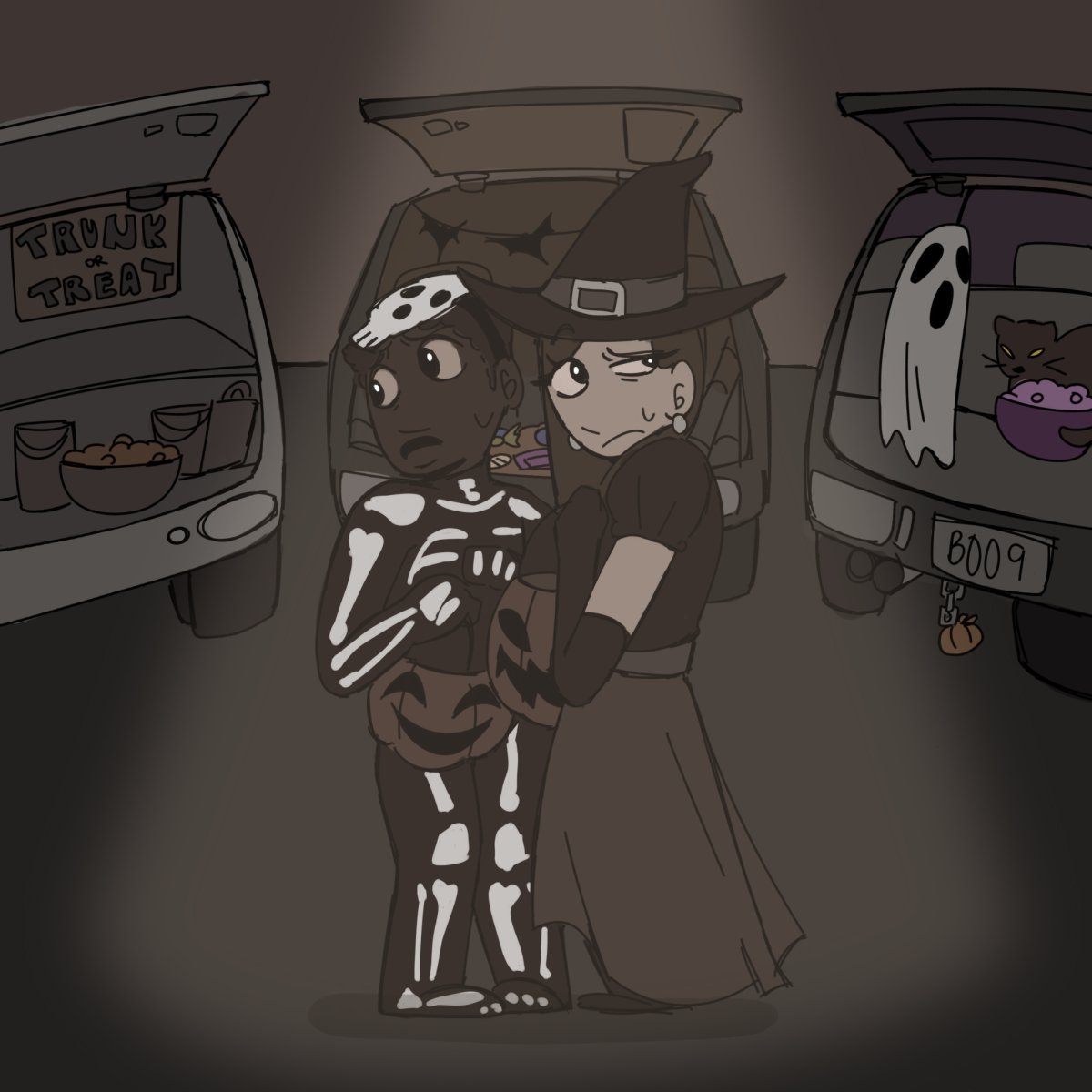There was a time when Halloween night meant wandering through dark neighborhoods, the chill autumn air mixing with the flicker of jack-o’-lanterns on porches. Kids raced from house to house in their crooked costumes, the euphoric laughter of an oncoming sugar rush echoing through the streets. There was excitement, mystery and just enough fear to make the candy taste even sweeter. Halloween used to be about adventure, about facing the unknown with a flashlight in one hand and a plastic pumpkin in the other.
But now, that thrill is slowly disappearing. Communities have recently turned to “trunk-or-treating,” where families gather in a parking lot, pop open decorated car trunks and hand out candy in a controlled, daylight environment. It’s neat, efficient and safe, but it also strips away everything that makes Halloween magical.
Trunk-or-treating replaces the spontaneous joy of trick-or-treating with an overly organized and sanitized meeting. There’s no mystery, wandering into the night and the thrill of knocking on a spooky door and wondering who (or what) might answer. Instead, kids mindlessly walk in a circle under fluorescent lights, routinely collecting candy from car to car while parents chat politely nearby. The spirit of adventure has been traded for convenience. The adrenaline of trick-or-treating, and as a result the anticipation of adventure has been downplayed by the overly controlled nature of what once was a purposefully exhilarating tradition.
Supporters argue that trunk-or-treating keeps children safe, which is understandable,but Halloween has always been about confronting fear, not avoiding it. The night’s magic comes from the darkness, the costumes and the courage of little ghosts and superheroes daring to explore their own neighborhoods. By replacing the unknown with a patrolled event, we’ve removed the excitement–and the sense of community that came with it.
Ironically, trunk-or-treating doesn’t strengthen community; it weakens it. Traditional trick-or-treating connects neighbors. It’s the one night a year when doors are open, lights are on and people of all ages share smiles, scares and sweets. No matter who you were or if you knew each other, you could count on the door being opened to a smile, compliment and a sweet piece of candy.
When we move Halloween into parking lots, we lose that wholesome connection between families and neighborhoods because we turn a form of connection between strangers into a pre-organized and socially restrictive event. After all, not every neighbor is going to be made aware of a meeting spot in a parking lot, but everyone will be able to participate when their very own doorbell is rung.
Trunk-or-treating might be convenient, but it’s hollow. It’s Halloween without the heart, a sugar rush without the soul. The true spirit of Halloween lives in shadowy streets, glowing pumpkins and the simple joy of shouting “trick or treat!” at a stranger’s door.



